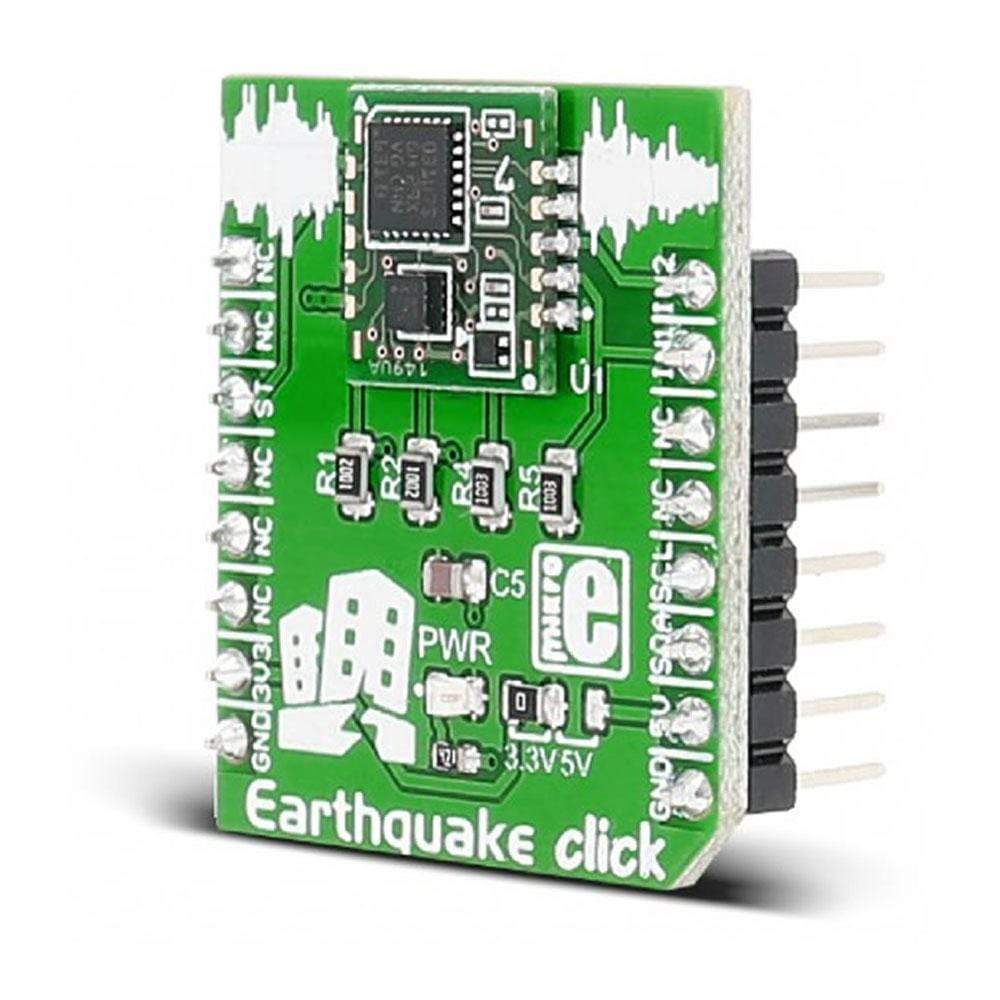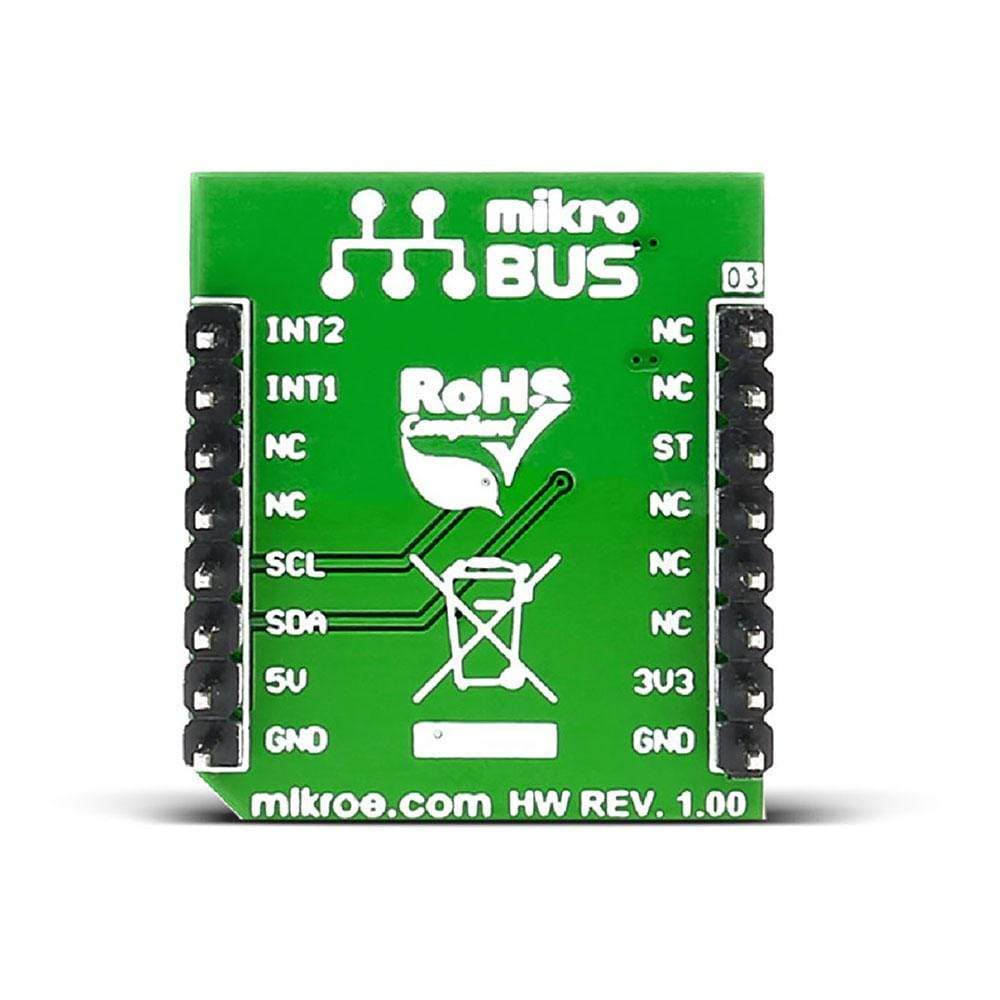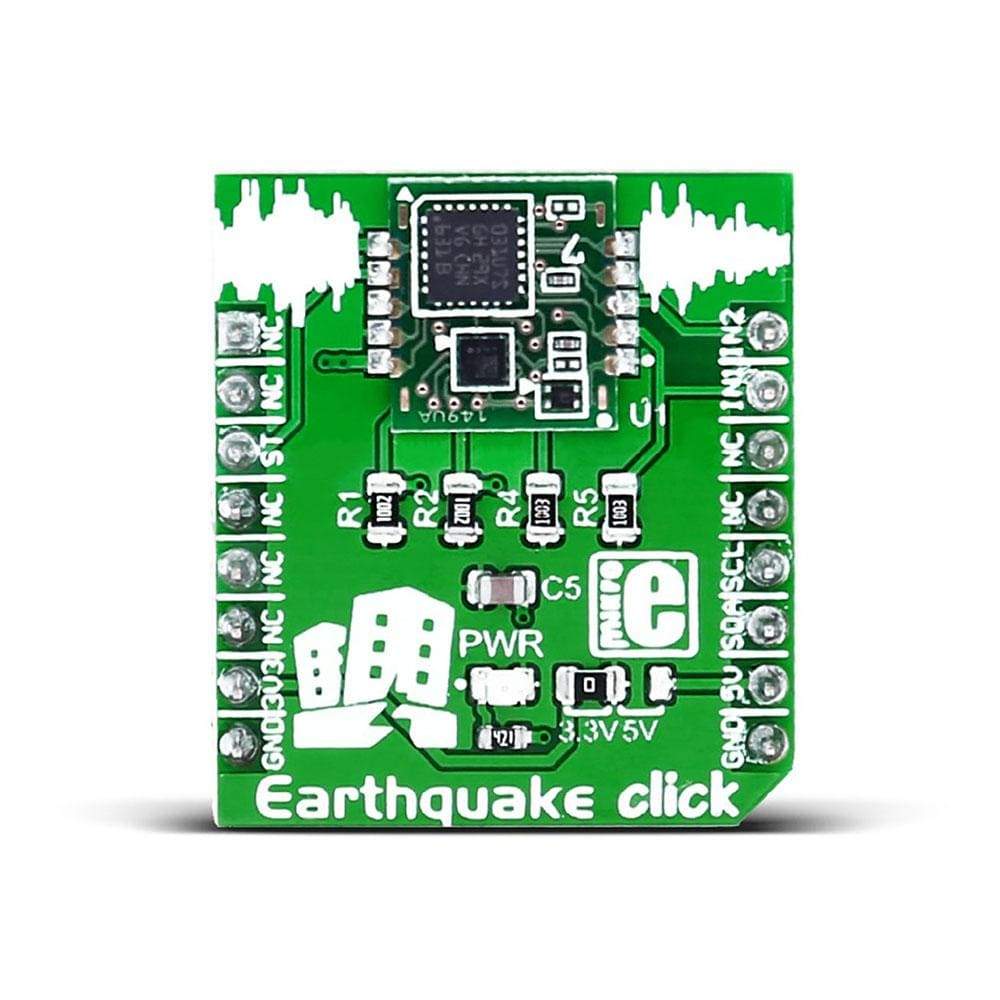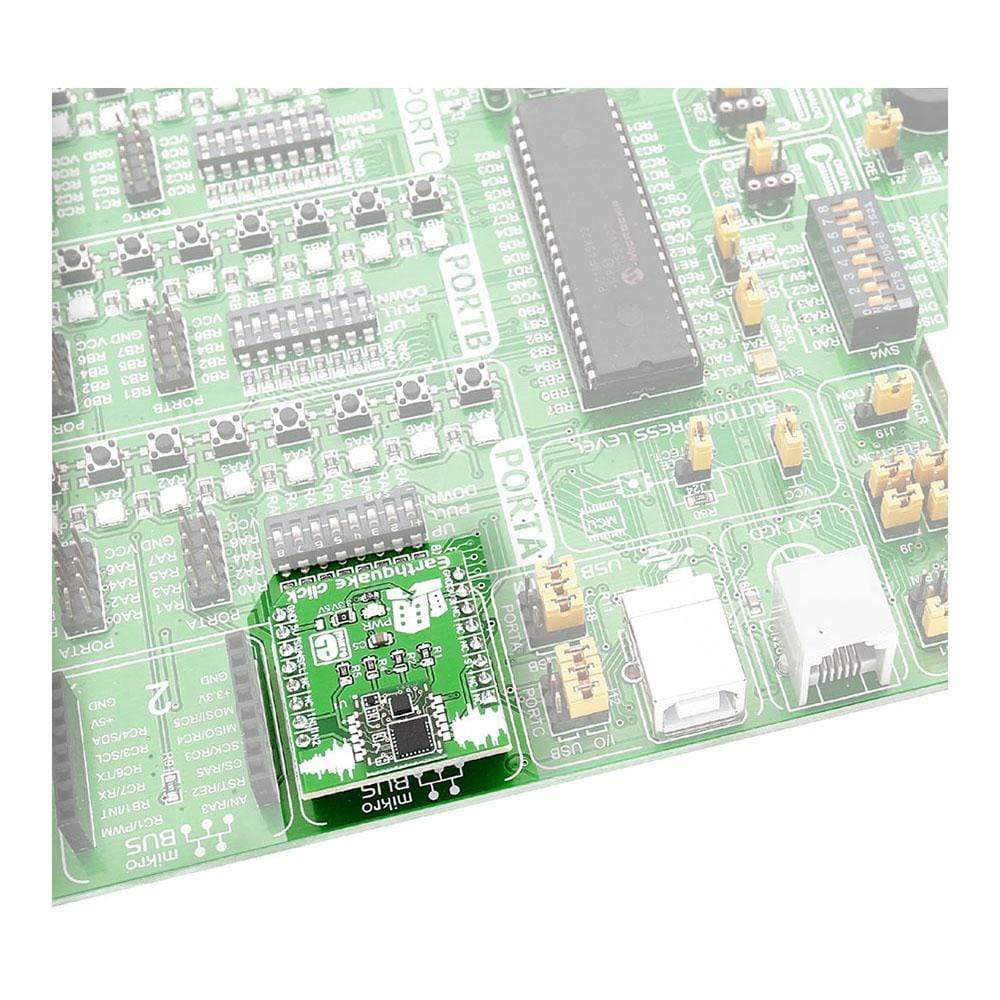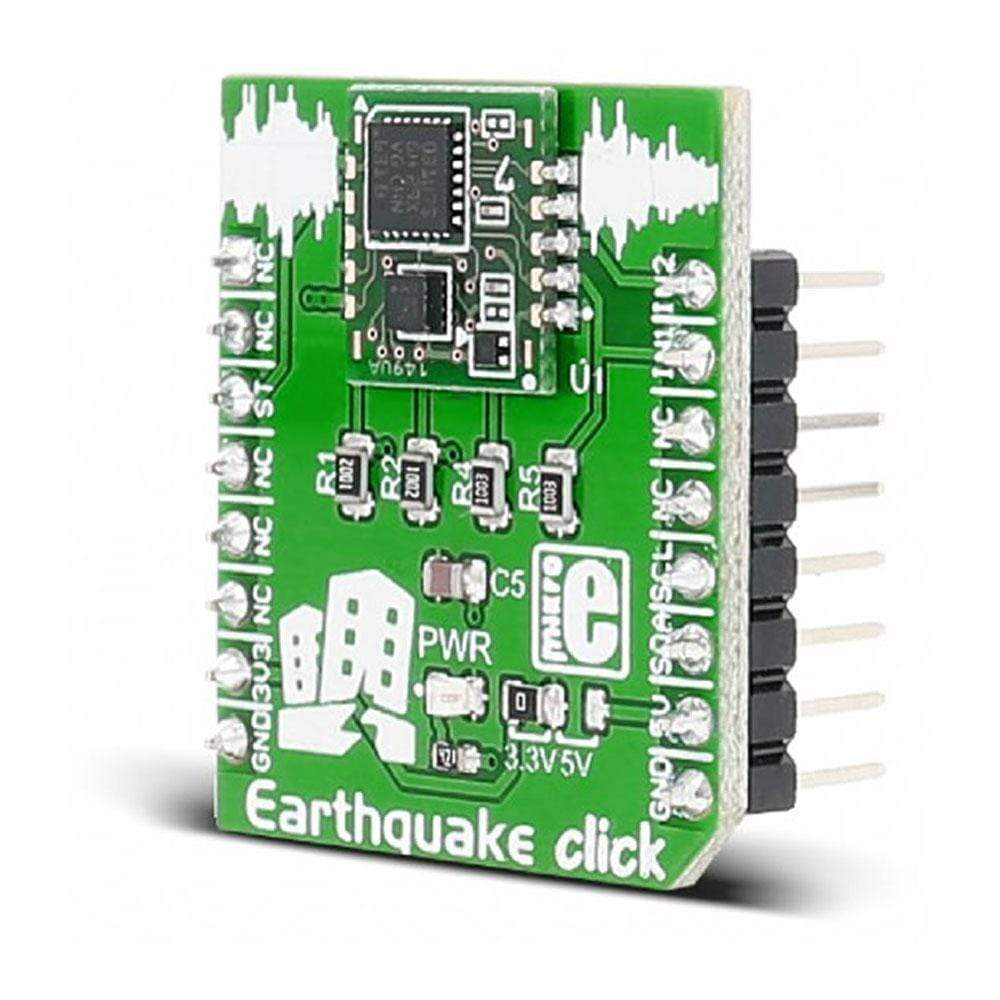
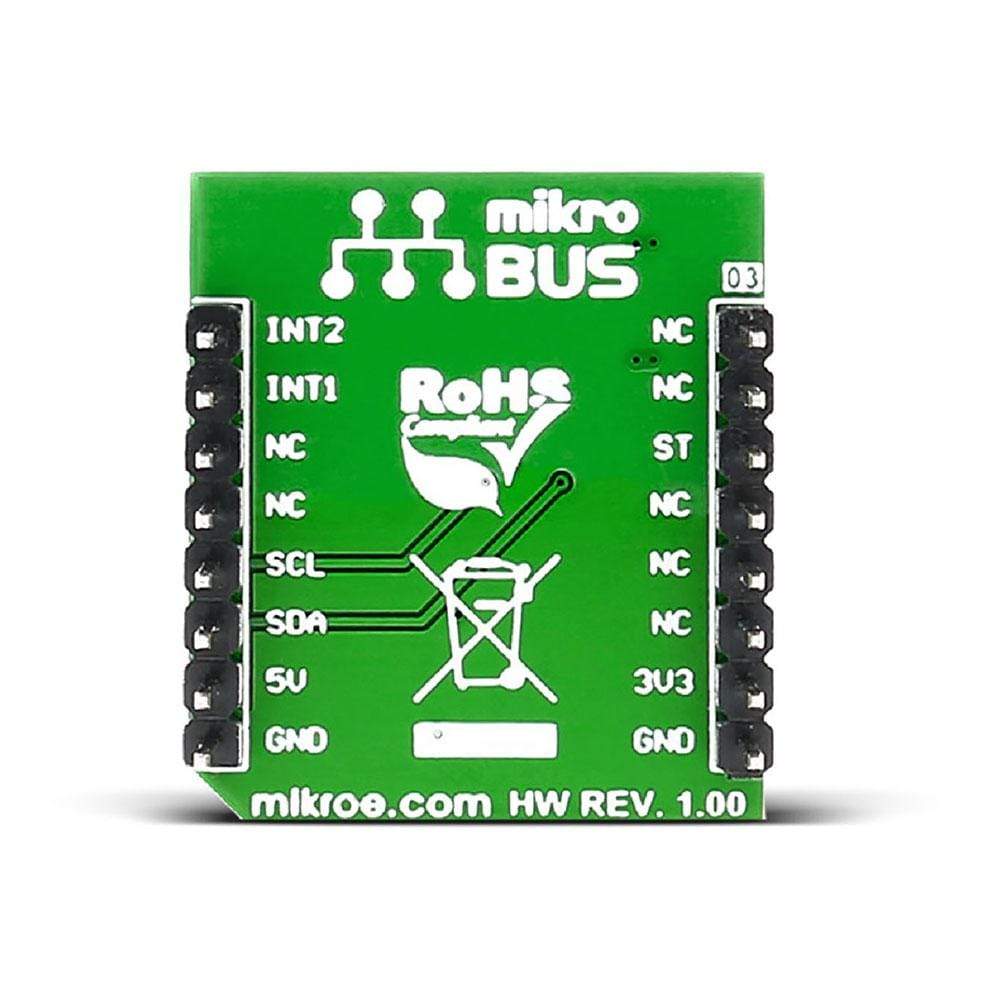
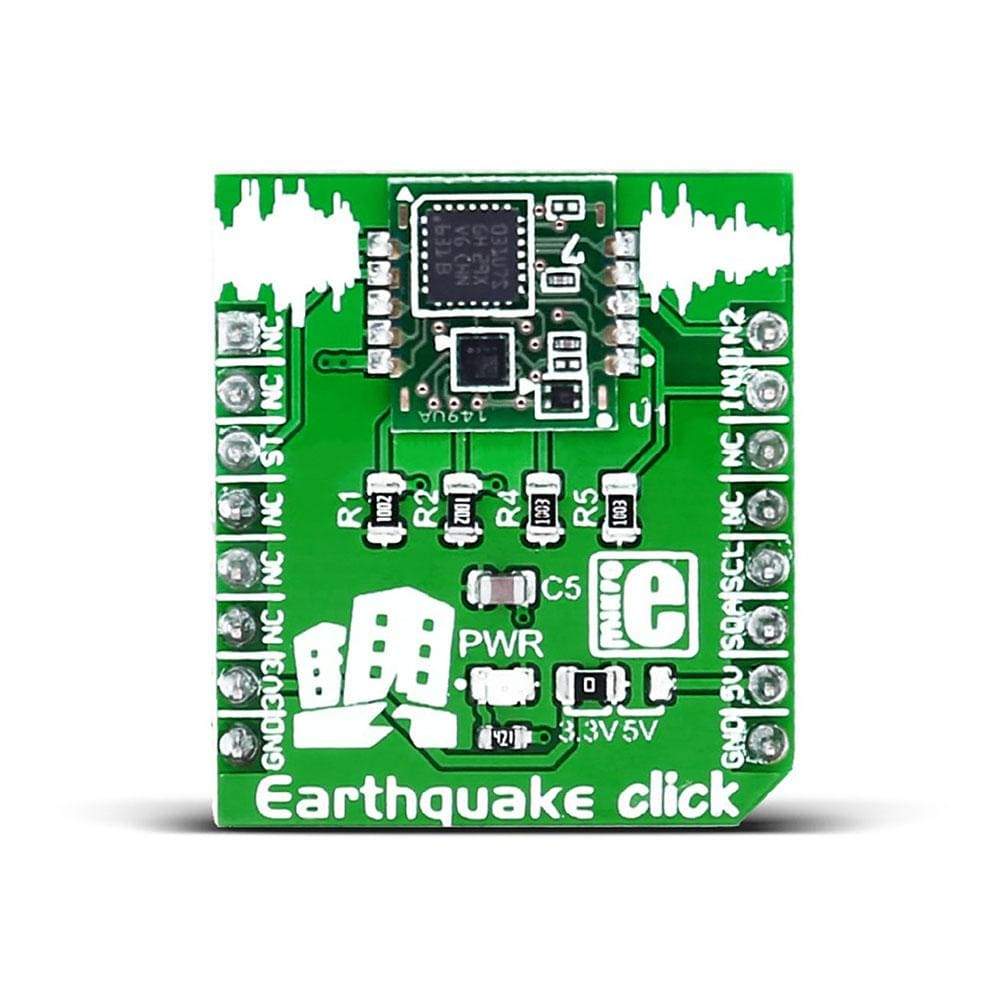
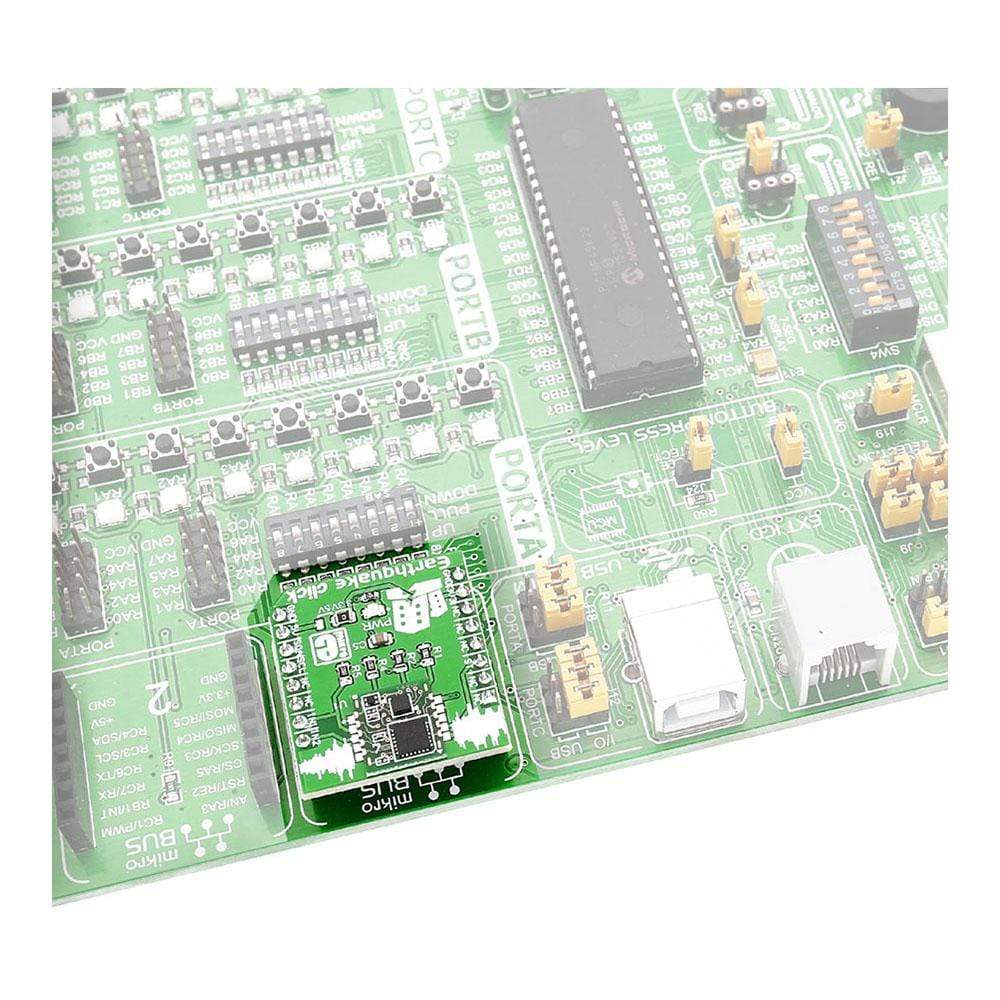
Overview
The Earthquake Click Board™ is based on the D7S, the world's smallest high-precision seismic sensor from Omron. The Click Board™ is designed to run on either a 3.3V or 5V power supply. It communicates with the target MCU over the I2C interface, with additional functionality provided by the following pins on the MikroBUSline: PWM, INT, CS.
When an earthquake occurs with a seismic intensity equivalent to 5 Upper or higher on the JMA (Japan Meteorological Agency) Seismic Intensity Scale, the D7S will activate the shutoff output to notify the user that an earthquake has occurred.
Downloads
Das Earthquake Click Board™ basiert auf dem D7S, dem weltweit kleinsten hochpräzisen seismischen Sensor von Omron. Das Click Board™ ist für den Betrieb mit einer 3,3-V- oder 5-V-Stromversorgung ausgelegt. Es kommuniziert mit der Ziel-MCU über die I2C-Schnittstelle, wobei zusätzliche Funktionen durch die folgenden Pins auf der MikroBUSline bereitgestellt werden: PWM, INT, CS.
Wenn ein Erdbeben mit einer seismischen Intensität auftritt, die mindestens der Stufe 5 auf der seismischen Intensitätsskala der JMA (Japan Meteorological Agency) entspricht, aktiviert das D7S den Abschaltausgang, um den Benutzer darüber zu informieren, dass ein Erdbeben aufgetreten ist.
| General Information | |
|---|---|
Part Number (SKU) |
MIKROE-2561
|
Manufacturer |
|
| Physical and Mechanical | |
Weight |
0.017 kg
|
| Other | |
Country of Origin |
|
HS Code Customs Tariff code
|
|
EAN |
8606018710263
|
Warranty |
|
Frequently Asked Questions
Have a Question?
Be the first to ask a question about this.

